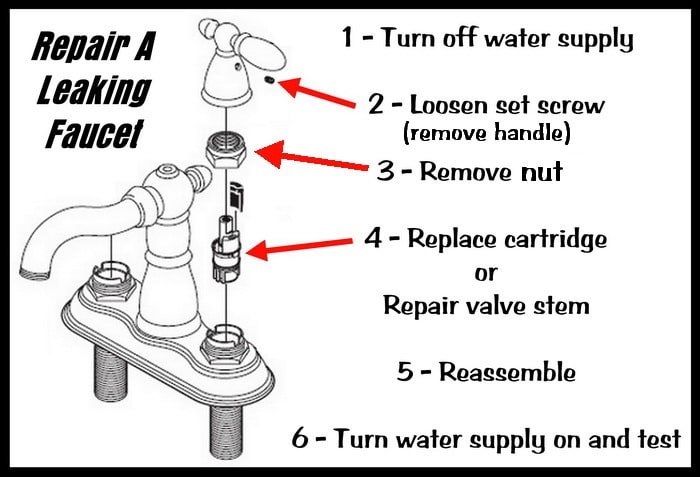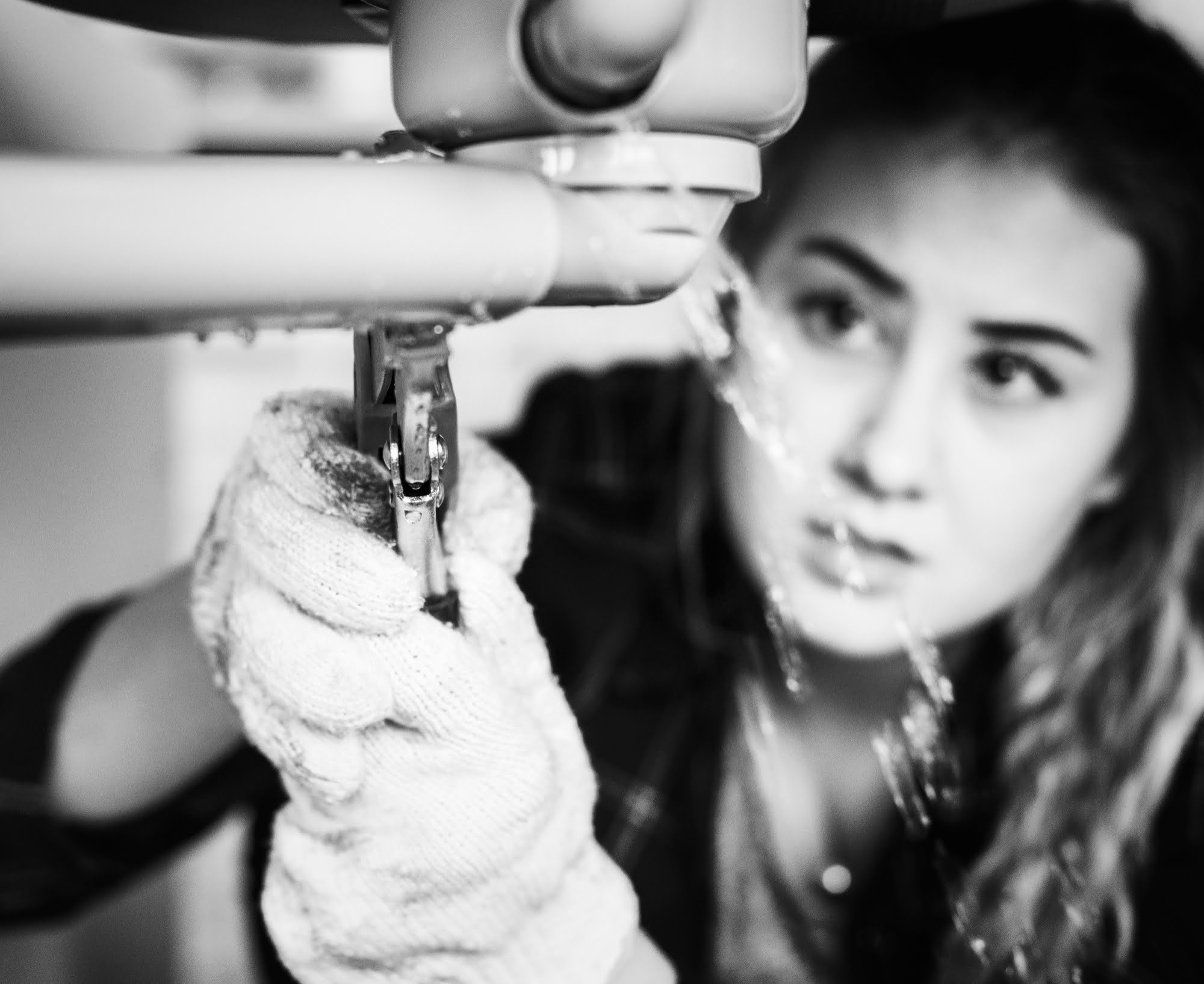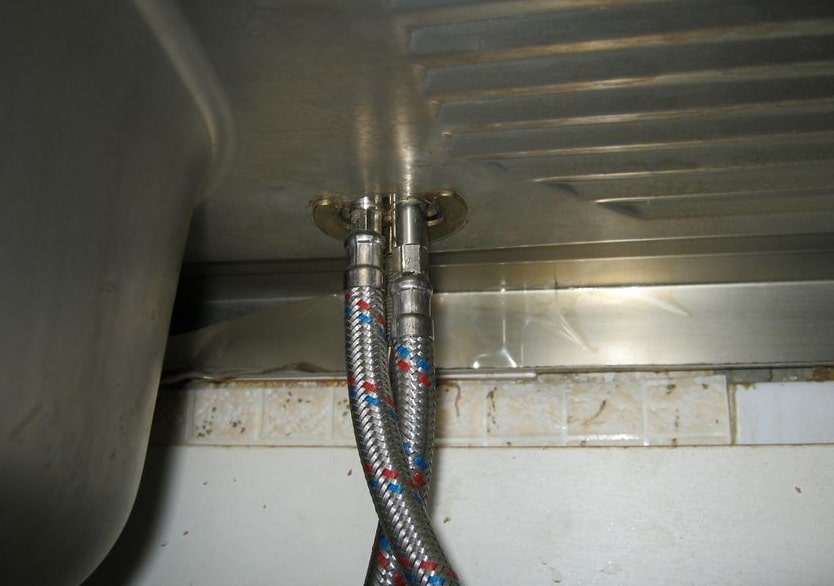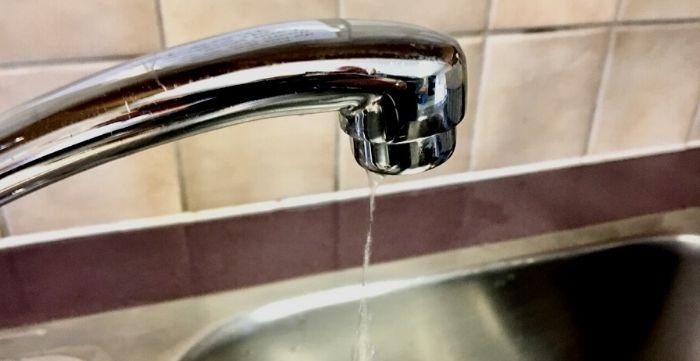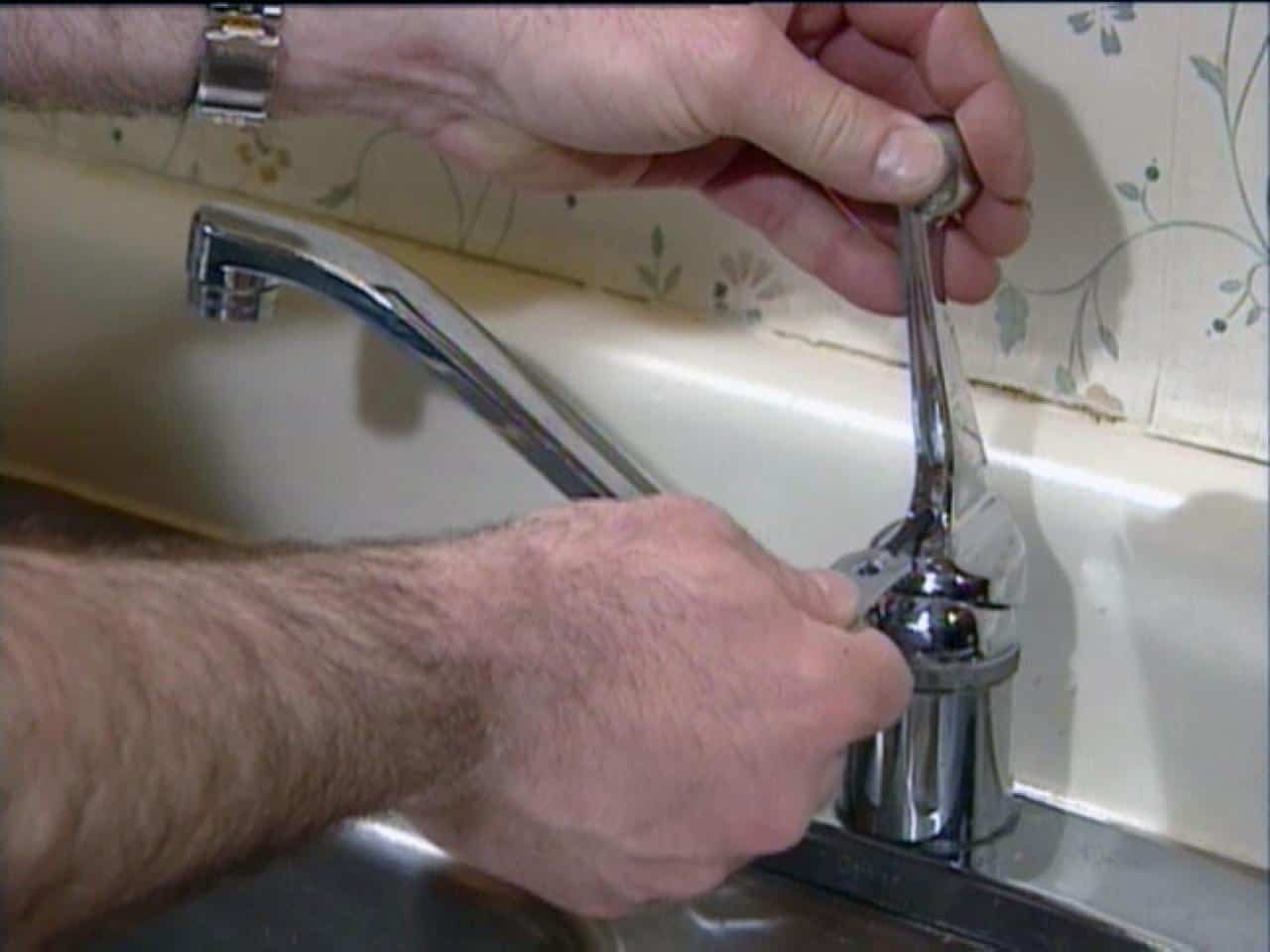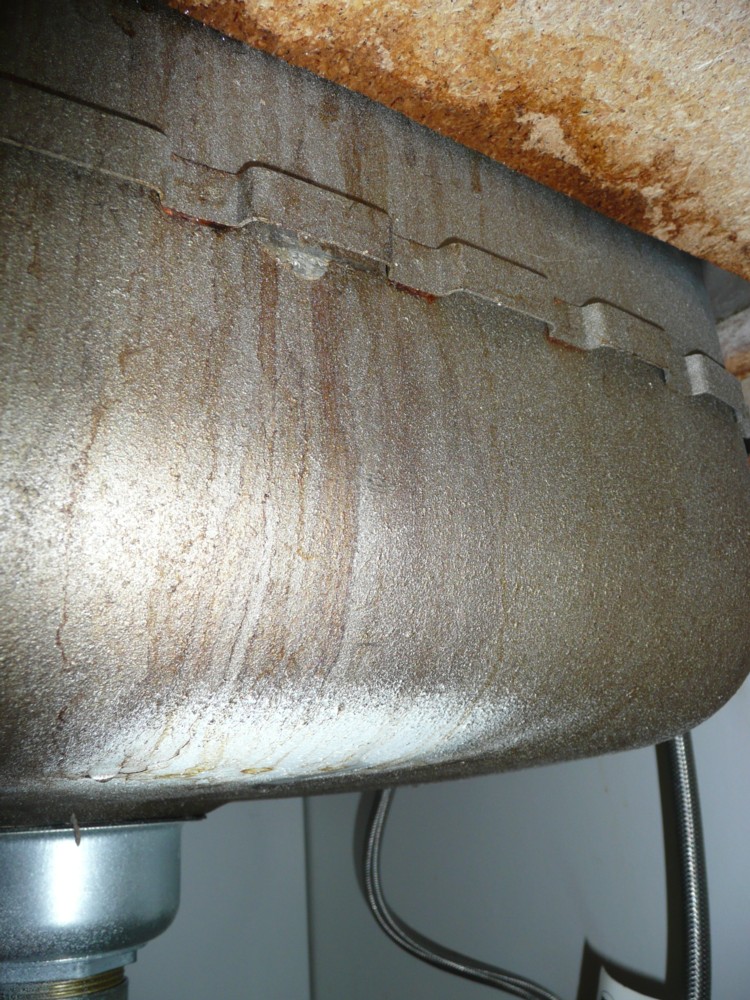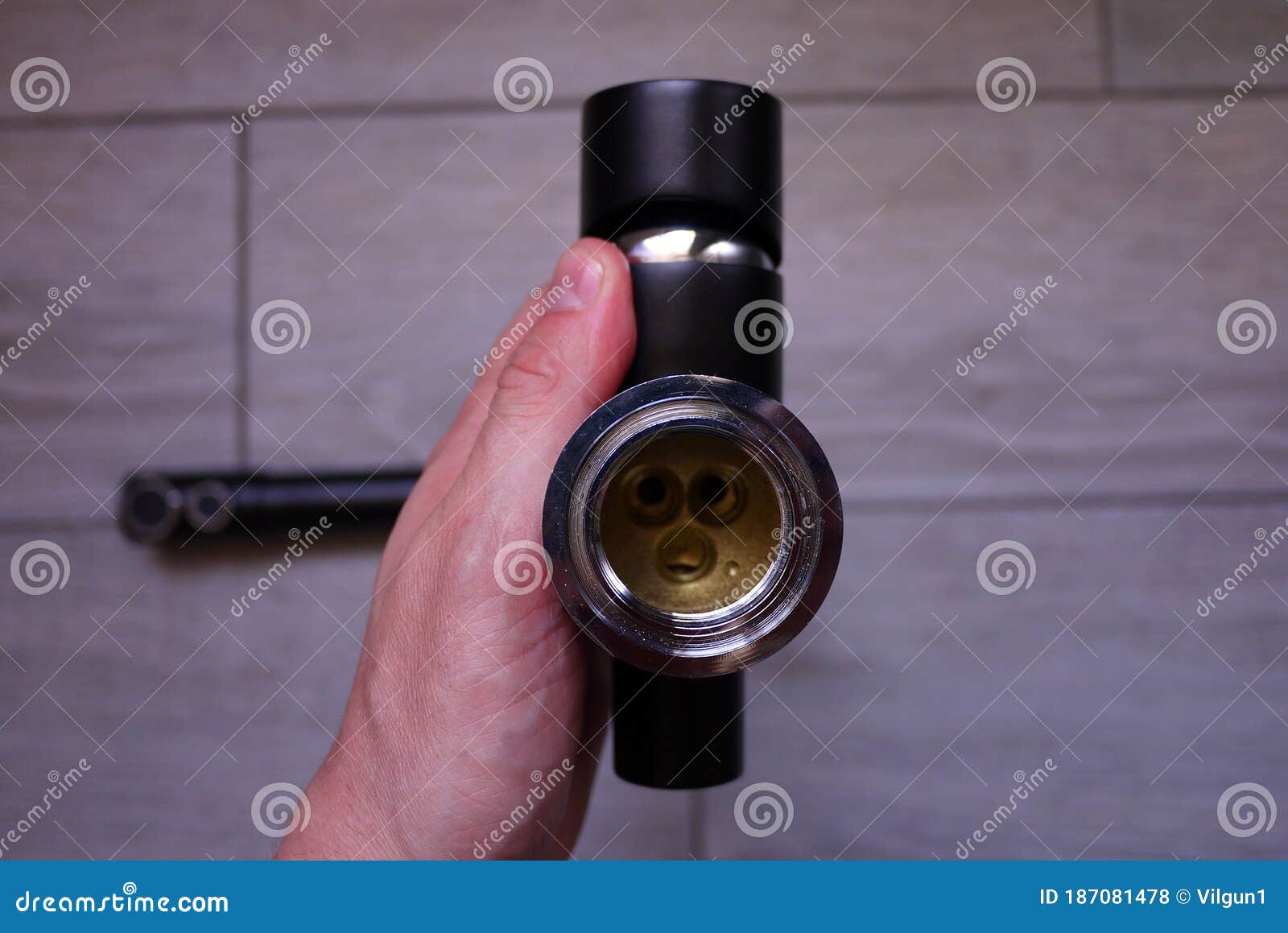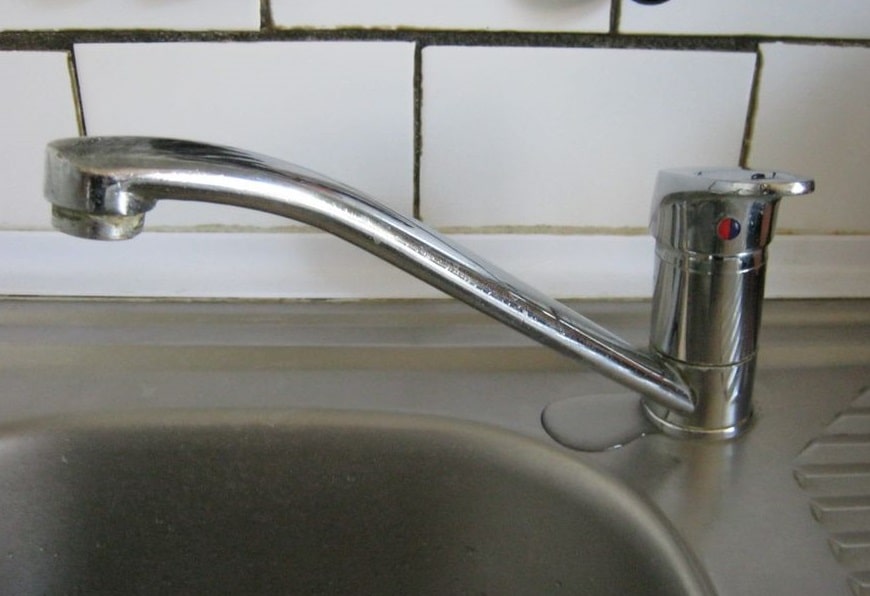1. How to Fix a Leaky Kitchen Sink Faucet
If you've noticed a constant drip or puddle of water under your kitchen sink faucet, you may have a leak. Not only is a leaking faucet annoying, but it can also waste a significant amount of water and increase your water bill. Luckily, fixing a leaky kitchen sink faucet is a relatively simple task that can be done in a few easy steps.
The first step in fixing a leaky kitchen sink faucet is to determine the cause of the leak. The most common cause of a leaky faucet is a worn out or damaged washer or O-ring. These small rubber pieces can become worn out over time, causing water to leak out of the faucet. Other potential causes of a leaky faucet include corroded or loose parts, a cracked valve seat, or a damaged cartridge.
To fix a leaky kitchen sink faucet, you'll need to gather a few tools: an adjustable wrench, a flathead screwdriver, and replacement parts for the faucet. Make sure to turn off the water supply to the faucet before beginning any repairs.
Next, remove the handle of the faucet by using an adjustable wrench to loosen and remove the screw holding it in place. Once the handle is removed, you should be able to access the internal mechanisms of the faucet.
If the cause of the leak is a worn out washer or O-ring, you can simply replace these parts with new ones. Make sure to use the correct size and type of replacements for your specific faucet model. If the issue is with another part of the faucet, you may need to replace the entire cartridge or valve seat.
Once you have replaced the necessary parts, reassemble the faucet and turn the water supply back on. Test the faucet to ensure the leak has stopped. If the issue persists, you may need to consult a professional plumber for further assistance.
2. Common Causes of a Leaking Kitchen Sink Faucet
The kitchen sink faucet is one of the most frequently used fixtures in the home, making it susceptible to wear and tear over time. As a result, it's common for kitchen sink faucets to develop leaks. Understanding the common causes of a leaking kitchen sink faucet can help you identify and address the issue quickly.
One of the most common causes of a leaking kitchen sink faucet is a damaged or worn out washer or O-ring. These small rubber pieces can become worn out with repeated use, causing water to leak out of the faucet. Another common cause is a cracked or corroded valve seat, which can also result in a leaky faucet.
In some cases, a leaking faucet may be caused by loose or damaged parts. This can happen if the faucet has not been properly maintained or if it is an older fixture. Over time, the parts of the faucet can become loose or corroded, leading to leaks.
Improper installation can also be a cause of a leaking kitchen sink faucet. If the faucet was not installed correctly, it may not function properly and could develop leaks. In this case, it's best to consult a professional plumber to properly install the faucet and prevent any future leaks.
Water pressure issues can also contribute to a leaking kitchen sink faucet. If the water pressure is too high, it can put stress on the internal components of the faucet and cause leaks. On the other hand, low water pressure can also be a problem, as it can cause air to get trapped in the pipes and lead to leaks.
3. DIY Solutions for a Leaking Kitchen Sink Faucet
Dealing with a leaking kitchen sink faucet can be frustrating, but luckily, there are some DIY solutions that can help you address the issue without calling a professional plumber. These simple fixes can save you time and money while also preventing further water damage.
If the cause of the leak is a worn out or damaged washer or O-ring, you can easily replace these parts yourself. To do so, turn off the water supply to the faucet and follow the steps outlined in the first heading. You can purchase replacement parts at a hardware store or online, making it a quick and cost-effective solution.
Another DIY solution for a leaking kitchen sink faucet is to clean and tighten any loose parts. Over time, the internal components of the faucet can become dirty and loose, leading to leaks. Use a rag and some gentle cleaner to remove any buildup, and then use an adjustable wrench to tighten any loose parts.
If the faucet is still leaking after attempting these solutions, you may need to replace the entire cartridge or valve seat. This can be a more complicated task, so if you're not comfortable doing it yourself, it's best to consult a professional plumber for assistance.
4. How to Identify and Repair a Leaking Kitchen Sink Faucet
Identifying a leaking kitchen sink faucet can be tricky, as the source of the leak may not always be visible. However, there are some signs to look out for that can help you determine if your faucet is leaking and where the leak is coming from.
The most obvious sign of a leaking faucet is a constant drip or flow of water when the faucet is turned off. You may also notice a puddle of water under the faucet or on the countertop. If you're unsure if your faucet is leaking, you can place a paper towel under the faucet and check for any wet spots after a few hours.
To determine the source of the leak, you'll need to disassemble the faucet and inspect the internal components. Follow the steps outlined in the first heading to do so. Once you have identified the cause of the leak, you can repair or replace the necessary parts.
If the leak is coming from the base of the faucet, it may be caused by a loose connection or damaged seal. In this case, you can try tightening the connections or replacing the O-ring or gasket. If the leak is coming from the spout, you may need to replace the cartridge or valve seat.
5. Troubleshooting a Leaking Kitchen Sink Faucet
If you've attempted to fix a leaking kitchen sink faucet and the issue persists, there may be some underlying problems that require further troubleshooting. In some cases, a leaky faucet may be a symptom of a larger plumbing issue.
One potential cause of a persistent leak is a faulty water pressure regulator. This device controls the flow of water into your home and can become damaged or malfunction over time. If the water pressure is too high, it can cause stress on the faucet, leading to leaks.
Another potential issue is a faulty shut-off valve. This valve controls the flow of water to your faucet and can become damaged or corroded, resulting in leaks. In this case, you may need to replace the shut-off valve to prevent further leaks.
If you're unsure of the cause of the leak or are unable to fix it yourself, it's best to consult a professional plumber for assistance. They can accurately diagnose the issue and provide you with the best solution to fix your leaking kitchen sink faucet.
6. Steps to Fix a Leaking Kitchen Sink Faucet
Fixing a leaking kitchen sink faucet may seem like a daunting task, but with the right tools and steps, you can easily address the issue and prevent further leaks. Here are the basic steps to follow when fixing a leaky faucet:
1. Turn off the water supply to the faucet.
2. Disassemble the faucet by removing the handle and other components.
3. Identify the cause of the leak (washer, O-ring, cartridge, valve seat, etc.).
4. Replace the necessary parts with new ones.
5. Reassemble the faucet and turn the water supply back on.
6. Test the faucet to ensure the leak has stopped.
If the issue persists after following these steps, you may need to consult a professional plumber for further assistance.
7. Tips for Preventing a Leaking Kitchen Sink Faucet
While it's impossible to prevent all leaks from occurring, there are some steps you can take to help prevent a leaking kitchen sink faucet.
First, make sure to properly maintain your faucet by cleaning and tightening any loose parts regularly. This can prevent wear and tear on the internal components and reduce the likelihood of leaks.
It's also important to address any leaks as soon as you notice them. Even a small drip can waste a significant amount of water and increase your water bill. Plus, ignoring a leak can lead to further damage and more costly repairs in the future.
Lastly, be mindful of the water pressure in your home. If the pressure is too high, it can put stress on your faucet and cause leaks. Consider installing a water pressure regulator to keep the pressure at a safe and optimal level.
8. Signs You Have a Leaking Kitchen Sink Faucet
As mentioned before, the most obvious sign of a leaking kitchen sink faucet is a constant drip or flow of water when the faucet is turned off. However, there are some other signs to look out for that may indicate a leaky faucet.
If you notice a sudden increase in your water bill, it could be a sign of a hidden leak. Check your faucet for any visible leaks and consider contacting a professional plumber for further inspection.
Another sign of a leaking kitchen sink faucet is water damage or mold growth around the faucet or under the sink. If you notice any discoloration or musty odors, it could be a sign of a hidden leak that needs to be addressed.
9. How to Replace a Leaking Kitchen Sink Faucet
If your kitchen sink faucet is beyond repair and needs to be replaced, it's best to leave the task to a professional plumber. Replacing a faucet can be a complicated and time-consuming task, and it's important to ensure it is installed correctly to prevent any future leaks.
A professional plumber will have the necessary tools and expertise to remove the old faucet and install a new one properly. They can also recommend the best type of faucet for your specific needs and budget.
If you're determined to replace the faucet yourself, make sure to research and follow the manufacturer's instructions carefully to ensure proper installation.
10. Professional Solutions for a Leaking Kitchen Sink Faucet
If you're unable to fix a leaking kitchen sink faucet yourself or if the issue persists after attempting DIY solutions, it's best to consult a professional plumber for assistance. They can accurately diagnose the issue and provide you with the best solution to fix the leak.
Professional plumbers have the necessary tools and expertise to handle any type of faucet repair or replacement. They can also identify any underlying plumbing issues that may be contributing to the leak and address them accordingly.
While it may be tempting to try and fix a leaky faucet yourself to save money, in the long run, consulting a professional plumber can save you time, money, and frustration by ensuring the issue is properly resolved.
The Importance of Fixing a Leak in Your Kitchen Sink Faucet

Why a Leaking Kitchen Sink Faucet is a Big Deal
 A leaky kitchen sink faucet may seem like a minor inconvenience, but it is actually a problem that should be addressed as soon as possible. Not only is it wasteful and costly to your water bill, but it can also lead to further damage and potentially harmful mold growth in your home. Taking care of a leak in your kitchen sink faucet is not only important for the functionality of your household, but it is also crucial for maintaining a healthy and safe living environment.
A leaky kitchen sink faucet may seem like a minor inconvenience, but it is actually a problem that should be addressed as soon as possible. Not only is it wasteful and costly to your water bill, but it can also lead to further damage and potentially harmful mold growth in your home. Taking care of a leak in your kitchen sink faucet is not only important for the functionality of your household, but it is also crucial for maintaining a healthy and safe living environment.
The Causes of a Leaky Kitchen Sink Faucet
 There are several reasons why your kitchen sink faucet may be leaking. The most common cause is wear and tear over time, as the constant use of the faucet can cause the internal parts to deteriorate. Another common cause is a loose or damaged valve or washer, which can easily be replaced. In some cases, the issue may be with the water pressure or the water supply line. Regardless of the cause, it is important to address the problem promptly to prevent any further damage.
There are several reasons why your kitchen sink faucet may be leaking. The most common cause is wear and tear over time, as the constant use of the faucet can cause the internal parts to deteriorate. Another common cause is a loose or damaged valve or washer, which can easily be replaced. In some cases, the issue may be with the water pressure or the water supply line. Regardless of the cause, it is important to address the problem promptly to prevent any further damage.
The Consequences of Ignoring a Leak
 Ignoring a leak in your kitchen sink faucet may seem like an easy solution, but it can actually lead to more serious problems. The constant dripping of water can cause damage to your sink and countertop, leading to costly repairs. Additionally, if the leak is coming from the supply line, it can cause structural damage to your home and potentially result in mold growth. Not to mention, the constant sound of dripping water can be quite annoying and disrupt your daily routine.
Ignoring a leak in your kitchen sink faucet may seem like an easy solution, but it can actually lead to more serious problems. The constant dripping of water can cause damage to your sink and countertop, leading to costly repairs. Additionally, if the leak is coming from the supply line, it can cause structural damage to your home and potentially result in mold growth. Not to mention, the constant sound of dripping water can be quite annoying and disrupt your daily routine.
The Solution: Fixing the Leak
 Fortunately, fixing a leak in your kitchen sink faucet is a simple and relatively inexpensive task. In most cases, it can be done on your own with the help of some basic tools and replacement parts. However, if you are not confident in your plumbing skills, it is best to hire a professional to ensure the job is done correctly. Not only will fixing the leak save you money in the long run, but it will also give you peace of mind knowing that your home is free from potential water damage and mold growth.
In conclusion, a leak in your kitchen sink faucet should not be taken lightly. It is important to address the issue as soon as possible to prevent any further damage and maintain a healthy living environment. If you notice a leak in your kitchen sink faucet, don't hesitate to take action and fix it promptly. Your wallet and your home will thank you.
Fortunately, fixing a leak in your kitchen sink faucet is a simple and relatively inexpensive task. In most cases, it can be done on your own with the help of some basic tools and replacement parts. However, if you are not confident in your plumbing skills, it is best to hire a professional to ensure the job is done correctly. Not only will fixing the leak save you money in the long run, but it will also give you peace of mind knowing that your home is free from potential water damage and mold growth.
In conclusion, a leak in your kitchen sink faucet should not be taken lightly. It is important to address the issue as soon as possible to prevent any further damage and maintain a healthy living environment. If you notice a leak in your kitchen sink faucet, don't hesitate to take action and fix it promptly. Your wallet and your home will thank you.




